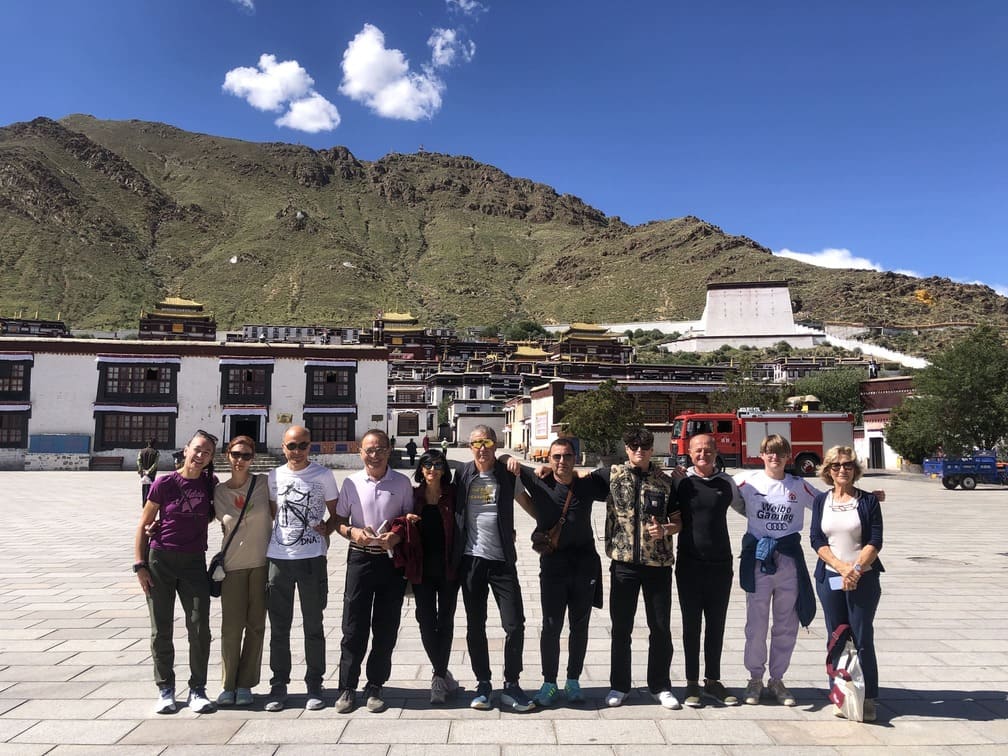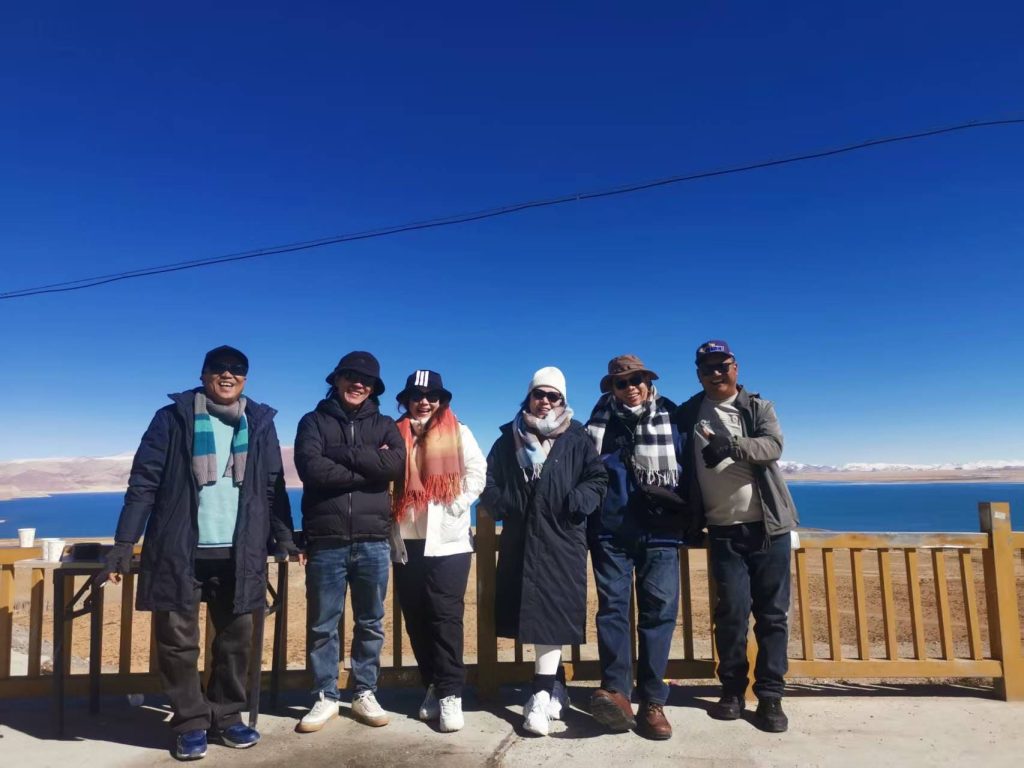Tibet, often referred to as the “Roof of the World,” is a place like no other. With its soaring peaks, vast plateaus, and deeply spiritual culture, Tibet has captivated travelers from all over the globe. While Tibet is commonly associated with trekking during the warmer months, winter in this high-altitude region offers an entirely different kind of experience—one that is quieter, more serene, and deeply contemplative.
For those who seek an unforgettable winter adventure, Tibet in winter offers an unparalleled opportunity to explore this mystical land. Whether you are drawn to its sacred sites, stunning landscapes, or challenging treks, traveling to Tibet in winter can be a unique and transformative experience. In this detailed guide, we’ll provide everything you need to know about traveling to Tibet in the winter months, from the best time to go and what to pack, to the must-see destinations and tips for staying safe.

Why Travel to Tibet in Winter?
Tibet in winter has a charm that few other places can match. While many people opt to visit Tibet during the summer months, winter offers distinct advantages that make it an attractive option for those looking for a more peaceful, reflective, and budget-friendly experience.
1. Fewer Tourists, More Peace
One of the main reasons to visit Tibet in winter is the opportunity to enjoy the region without the crowds. Tibet is a popular tourist destination, but the peak season is typically in the summer when most travelers visit. In winter, you’ll experience far fewer tourists, making it easier to explore Tibet’s sacred monasteries, ancient temples, and vast natural landscapes without the hustle and bustle of the high season.
The winter months bring a sense of tranquility and solitude, which is perfect for spiritual reflection. The spiritual significance of Tibet—especially places like Lhasa, Mount Kailash, and Namtso Lake—feels more intimate during the colder months, when you can explore at your own pace and immerse yourself in the serenity of the place.
2. Stunning Winter Landscapes
Winter transforms Tibet into a pristine white wonderland. Snow-capped mountains, frozen lakes, and icy rivers create a surreal atmosphere that adds to the region’s mystique. Tibet’s high-altitude terrain, with its open spaces and vast plains, looks even more dramatic when covered in snow.
If you’re looking for iconic views, winter is the perfect time to see Mount Everest, Mount Kailash, and the Himalayan mountain range in all their glory. The crisp winter air makes the sky clearer, offering unparalleled visibility and stunning panoramic views. It’s a photographer’s dream, with landscapes that look like something straight out of a postcard.
3. Lower Costs
Since winter is considered the off-season in Tibet, you’ll likely find lower prices for accommodation, guided tours, and even transportation. Hotels, especially those catering to international tourists, tend to offer discounted rates during the winter months. With fewer tourists in the region, you may also enjoy more flexibility with your travel plans, as tour operators are more likely to offer deals or customized itineraries.
4. Spiritual Significance
Winter is a quiet time in Tibet, and it is also when many local Tibetans embark on pilgrimages to the region’s sacred sites. The sacred Mount Kailash, the Jokhang Temple, and the Potala Palace attract fewer tourists, allowing for a more contemplative and spiritual experience. In winter, the lack of crowds means you can enjoy these places without the distractions of large groups, allowing you to feel more connected to the spiritual energy of Tibet.

Best Time to Visit Tibet in Winter
Tibet experiences harsh winters, with temperatures in the central and northern parts of the region often dropping well below freezing. However, this doesn’t mean that winter travel is impossible. The best time to visit Tibet during the winter months is typically from November to February. During this period, the weather is cold but generally dry, and the skies are clear, offering breathtaking views of the surrounding landscapes.
• November to December: Early winter offers a good balance of cold but manageable temperatures. Daytime temperatures in places like Lhasa hover around 10°C (50°F), while nighttime temperatures can dip below freezing. It’s an excellent time for sightseeing and trekking without the harsh winter conditions.
• January and February: These months are the coldest in Tibet. Temperatures in Lhasa can be well below freezing, and snow is common in other parts of Tibet, such as Shigatse and Gyantse. However, if you’re well-prepared for the cold, these months offer the clearest skies and the most dramatic winter landscapes, making it an ideal time for photography.

How to Get to Tibet in Winter
The journey to Tibet is a bit different from most destinations due to the region’s remote location and special entry requirements. Here’s a step-by-step guide on how to travel to Tibet in winter.
1. Get a Tibet Travel Permit
Before you can travel to Tibet, you’ll need a Tibet Travel Permit (TTP). This permit is mandatory for all foreign nationals wishing to visit Tibet, and it must be arranged through a registered travel agency. The TTP is required to board trains or flights into Tibet.
• How to Apply for a Tibet Travel Permit: The application process requires you to provide your passport and Chinese visa details. It usually takes around 10-15 days to process the permit. Once your permit is approved, you’ll receive a copy, which you must carry with you during your travels.
• Note: The Tibet Travel Permit cannot be obtained independently. All travelers must book a guided tour or join an organized group to travel to Tibet. You’ll also need an entry permit to enter China and any additional permits for specific regions within Tibet (e.g., Mount Kailash or Everest Base Camp).
2. Arriving in Tibet by Train or Air
• By Train: The most popular and scenic way to travel to Tibet is by train, particularly from Xining (the capital of Qinghai province) to Lhasa. The Tibet Railway is known for its breathtaking views of the Tibetan Plateau and its modern facilities, including oxygen-enriched cabins to help with altitude acclimatization. Trains to Tibet also depart from cities like Chengdu, Beijing, Xi’an, and Shanghai.
• The Xining-Lhasa Route: This is the most popular route for travelers coming from China. The train journey from Xining to Lhasa takes approximately 22 hours and crosses the Qinghai-Tibet Plateau—one of the highest railway lines in the world.
• Oxygen Supply: Trains to Tibet are equipped with oxygen supply systems to mitigate the effects of high-altitude sickness. Passengers can breathe supplemental oxygen when the train reaches higher altitudes, typically over 4,000 meters (13,123 feet).
• By Air: You can also reach Tibet by flying into Lhasa Gonggar Airport. Direct flights are available from cities like Chengdu, Beijing, Xi’an, Shanghai, and Kathmandu (Nepal). Flights are faster than trains but are also higher in cost.
3. Acclimatize Before Traveling Further
Tibet sits at a high altitude, and altitude sickness is a serious concern for travelers. In winter, the high-altitude conditions can feel even more challenging due to the cold and thinner air. To minimize the effects of altitude sickness, it’s crucial to acclimatize properly.
• Spend time in Lhasa: Arriving in Lhasa first is a good idea, as it is relatively lower in altitude compared to other areas of Tibet. The city is at about 3,650 meters (12,000 feet), and spending a few days there will allow your body to adjust to the altitude before heading to higher destinations like Mount Everest or Mount Kailash.
• Stay Hydrated: Drink plenty of water to help prevent dehydration, which can worsen the symptoms of altitude sickness.
• Take it Slow: Avoid rushing your itinerary, especially during the first few days in Tibet. Give your body time to acclimatize to the high altitude before engaging in any strenuous activities.

What to Pack for Tibet in Winter
Winter in Tibet can be extremely cold, particularly at higher altitudes. It’s essential to pack properly to stay warm and comfortable during your trip.
1. Clothing
• Thermal Base Layers: Pack moisture-wicking thermal underwear to help keep you warm and dry.
• Insulated Outerwear: A high-quality winter jacket with insulation is essential. It should be able to protect you from freezing temperatures and wind chill.
• Gloves, Hats, and Scarves: These accessories are a must to protect your extremities from the cold.
• Sturdy Footwear: Insulated, waterproof boots are recommended for trekking and walking in snowy conditions.
2. Altitude Medication
• Altitude Sickness Tablets: Even with acclimatization, altitude sickness can affect anyone at high elevations. It’s a good idea to bring medication to help with symptoms, such as Diamox, and always consult with your doctor before traveling.
3. Sun Protection
The winter sun can still be intense at high altitudes, so bring sunscreen (SPF 30 or higher), sunglasses, and lip balm to protect yourself from UV rays.
4. Camera and Gear
Winter in Tibet offers some of the most breathtaking photography opportunities, so don’t forget your camera and any other necessary equipment like tripods, extra batteries (cold weather drains them quickly), and memory cards.

Must-See Places in Tibet in Winter
Once you’ve arrived in Tibet, there are several key places to visit during your winter adventure:
1. Lhasa: Tibet’s spiritual and cultural capital, home to the Potala Palace, Jokhang Temple, and Barkhor Street.
2. Mount Everest: The ultimate destination for high-altitude trekking, with views of the world’s highest mountain.
3. Mount Kailash: A sacred pilgrimage site for Hindus, Buddhists, and Jains, offering one of the most spiritual trekking experiences.
4. Namtso Lake: A stunning high-altitude lake surrounded by snow-capped peaks.
5. Shigatse and Gyantse: Ancient towns offering historical monasteries and beautiful Tibetan architecture.

Conclusion: A Winter Journey to Tibet
Traveling to Tibet in winter offers a unique opportunity to explore one of the most spiritual, scenic, and remote regions of the world. With fewer tourists, breathtaking winter landscapes, and a rich cultural and spiritual heritage, Tibet in winter provides a memorable and transformative travel experience. Just remember to plan, prepare for the cold, and take the time to acclimatize, and you’ll be rewarded with a journey that’s truly out of this world.
